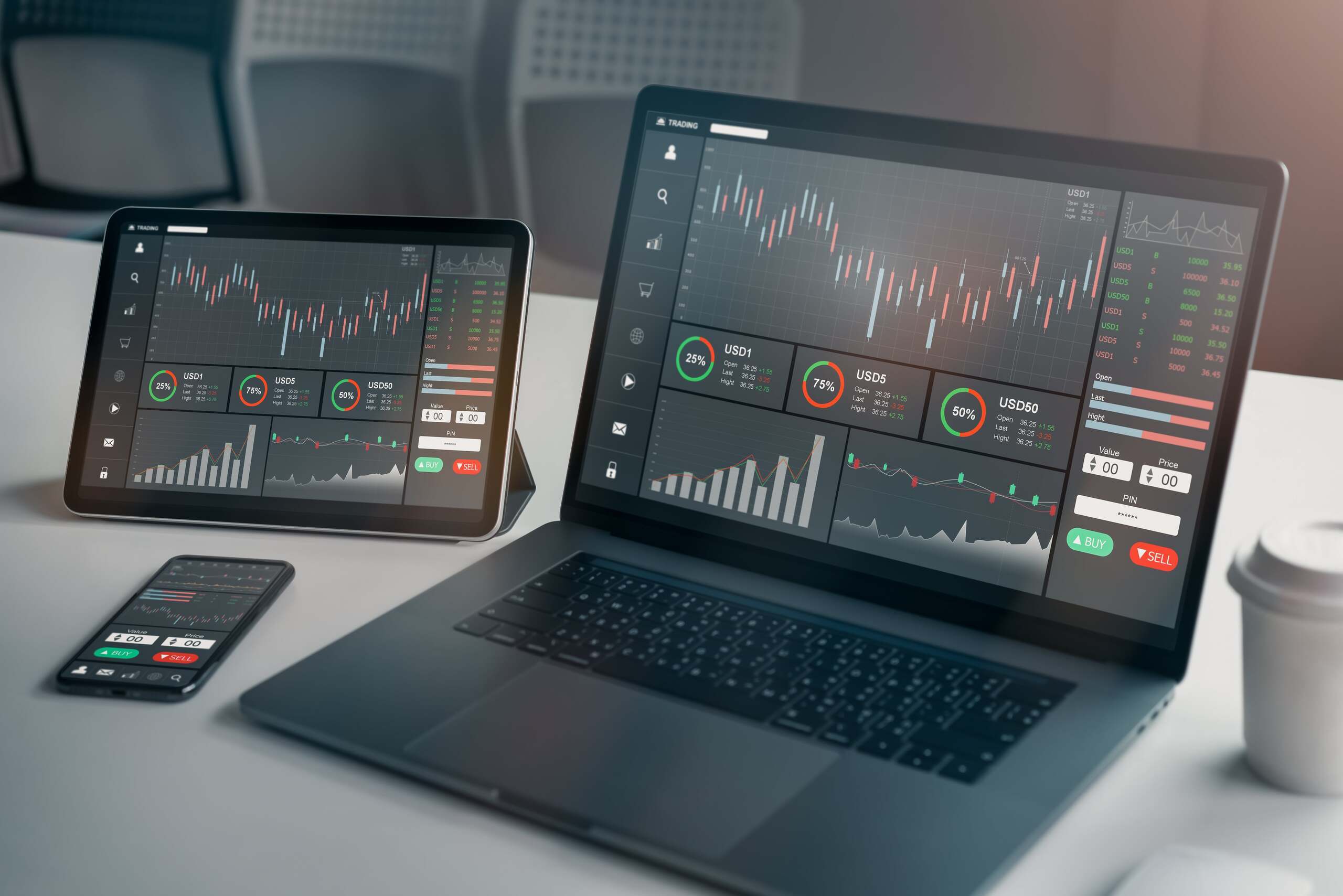Investors are always looking for ways to improve their plans and make the most money in the fast-paced world of bitcoin dealing. For expert traders who want to take their trading to the next level, IR Exchange’s advanced features and margin dealing give them the tools and choices they need.
When a trader wants to trade more than their initial investment would allow, they use margin trading to borrow money against the value of their existing assets. This lets buyers increase the amount of money they could make, but it also makes them more vulnerable to risk. Margin traders can get bigger shares in the market by using leverage, which could help them make a lot more money. It is important to know, though, that debt trading can also cause big loses if the market goes against the trader’s options.
Also, IR Exchange has advanced tools and features that meet the wants of experienced buyers. These features include tools for making charts, indicators for economic analysis, automated trading choices, and different types of orders that let traders set specific conditions for making trades. When traders use these advanced features, they can make better decisions, spot trends and patterns, and make trades more quickly.
Margin Trading on IR Exchange
When you borrow money from an exchange business to buy securities like stocks or cryptocurrencies, this is called margin trading. It gives buyers the chance to trade with more money than they actually have, which could make their wins or loses bigger.
When you trade on IR Exchange, margin trading lets you take money from the exchange and use your assets as protection. Users put in margin orders that say how much they want to borrow and what price they want to reach. The exchange then figures out how risky the situation is and how much it can borrow. If the order is accepted, the exchange sends the money so that users can make the deals they want to make.
One of the best things about credit buying is that it can help you make bigger gains. By borrowing money, investors can get more involved in opportunities that might be profitable, which means they can make bigger gains if their plans come true. Traders can also spread their portfolios and take advantage of different market situations when they use credit trading.
But it’s important to remember that credit buying comes with bigger risks. Losses can get worse if the market moves against the seller, and there is a chance of going bankrupt if the value of the lent assets drops below a certain level. Traders must carefully control the amount of risk they are taking and use stop-loss orders and other tools for this purpose.

Margin Requirements on IR Exchange
Investors need to know what “margin requirements” mean before they can trade on the IR Exchange.
The amount of money a trader has to put up to open an account or keep an open one open is called the margin requirement. It’s a form of security and is meant to protect against possible losses.
What kind of beginning investment is needed depends on the type of financial object being sold. For instance, the reserve needs for stocks might be different from those for futures contracts, options, or options. Most of the time, these standards are given as a share of the investment’s total value.
To figure out how much margin you need for a certain product, you need to know the exchange’s margin rates. These rates are set by a number of things, such as how volatile the market is and how liquid the product is. In general, margin rates are higher for investments that are riskier and more unpredictable.
Investors need to know about margin rates because they have a direct effect on their ability to borrow money to make purchases. When leverage rates are high, buyers have to put up more money to start accounts, which limits their ability to buy things. When leverage rates are low, on the other hand, buyers can control bigger investments with less money.
Margin Loans and Margin Trading Services
People who want to make more investments in the stock market can get margin loans, which are a type of loan. Most people get these loans through trading companies, and the investor’s existing assets or cash savings are used as collateral. The amount a trader can borrow is based on the value of their collateral and how much cushion the loan wants.
Investors must first open a margin account with a trading business in order to get a margin credit. They can borrow money against their assets or cash savings in this account. The investor’s collateral is used as security for the loan. This means that if the value of their investments goes down, they may have to put down more money or sell some of their holdings to keep the needed balance.
IR Exchange’s margin trading services give buyers a number of benefits. A lot of the time, these services come with advanced trading tools, the ability to trade on credit, and real-time access to market data. Investors can increase their possible profits by using leverage in margin trading. This means they can control a bigger share in the market than they would with just their own money. But it’s important to remember that debt buying also raises the risk of losing money because buyers can lose more than their original investment.
Managing Margin Positions on IR Exchange
A very important part of margin dealing on the IR Exchange is keeping track of your accounts. Traders need to keep a close eye on their account balance and debt amounts in order to keep an eye on their margin positions. This lets them figure out how much risk they are exposed to and make choices based on that information.
It’s also important to check the profit ratio often. This number tells you how likely it is that a seller will get a margin call by comparing their wealth to the amount of margin they have used. By keeping an eye on this sign, traders can act quickly to avoid losing all their money.
Also, situations with a close cushion should not be taken easily. Before traders close any deals, they need to carefully look at the market conditions, how their accounts are doing, and the risks involved. It is very important to think about things like the chance of making more money or losing more money, changes in prices, and how the market feels generally.
When you trade on margin, risk control is very important. Traders need to set strict risk management plans, which may include placing stop-loss orders and deciding how much of a loss is okay. Traders can protect their financial capital and reduce the chance of losing money by carefully controlling risk.
Overall, handling margin holdings on the IR Exchange well requires close attention all the time, smart choices, and strong risk management plans. As the market changes, traders must stay alert and ready to act quickly when necessary to increase their chances of success and lower their risk of losing a lot of money.
Advanced Features on IR Exchange
Advanced features on IR Exchange give buyers more tools and features to help them improve their trading methods. These features include stop-loss orders, trailing stop orders, limit orders, and conditional orders.
Stop-loss orders allow traders to set a predetermined price at which they would like their position to be automatically sold in order to limit their potential losses. Trailing stop orders, on the other hand, dynamically adjust the stop price as the market price moves in the trader’s favor, allowing them to lock in profits while still giving the trade room to grow.
Limit orders enable traders to set a specific price at which they would like to buy or sell an asset, ensuring they do not execute at less favorable prices. Conditional orders allow traders to set multiple criteria for executing a trade, such as requiring a specific price level or the occurrence of certain market conditions.
The benefits of utilizing these advanced features are numerous. Firstly, they provide traders with increased control over their trades, allowing them to set specific parameters and conditions. This gives traders the ability to automate their trading strategies and eliminate the need for constant monitoring.
Moreover, these features help manage risk by providing tools to limit potential losses and protect profits. This is particularly important in volatile markets where prices can fluctuate rapidly.
Comparison of Margin Trading and Advanced Features on IR Exchange
Margin trading and advanced features are two distinct tools that traders use to enhance their trading strategies on an IR exchange. While they serve different purposes, they also have some similarities in how they can improve trading abilities.
Margin trading is a practice where traders borrow funds from a broker to increase their buying power. This allows them to trade with more capital than they actually possess. The main difference between margin trading and advanced features is that margin trading specifically focuses on leveraging borrowed funds, whereas advanced features encompass a broader range of functionalities offered by the exchange platform.
One key difference is that margin trading allows traders to amplify their potential profits, as they can take larger positions than their available capital allows. However, this also means that the risks are magnified, and losses can exceed the initial investment. On the other hand, advanced features include capabilities such as automated trading, stop-loss orders, and technical analysis tools. These features provide traders with additional tools to execute their strategies effectively and make more informed decisions.
Despite their differences, margin trading and advanced features share some similarities when it comes to enhancing trading strategies. Both allow traders to access more sophisticated trading options and strategies that are not available to regular spot traders. They both provide opportunities for traders to optimize their trading approach and achieve higher returns.

Conclusion
Overall, margin trading and the advanced features offered on IR Exchange can significantly enhance trading outcomes if utilized with caution and proper planning. By capitalizing on the benefits and implementing effective strategies, traders and investors can optimize their potential for success in the dynamic and fast-paced world of financial markets.

